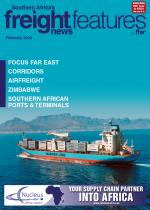The digital transformation of customs and borders lies at the heart of corridor improvement, says Desiderio Fernandes, current president of The Federation of Clearing and Forwarding Associations of Southern A f r ic a (FCFA SA).Fernandes, who is also a World Customs Organization (WCO) representative and a member of the East and Southern Africa Regional Private Sector Group (ESARCPG), has long advocated for increased customs-to-customs data sharing.“It is the low-hanging fruit that can make all the difference, significantly increasing intra-regional trade and improving efficiency in the movement of cargo,” he told Freight News. “This has to be our focus, particularly in southern Africa where there is no other customs union except for Sacu. A system with accredited operations where customs shares data digitally will fast-track the movement of cargo. If we are talking about successful corridors and growth on our corridors, this has to be our starting point.”He said while hard infrastructure was important, it required large-scale investment. “If we can just start to share the most basic information such as the type of cargo, the value, the shipper consigned, the destination – public information - on our corridors, we will already see a difference.”In southern Africa political will and mistrust between member states still hampered the process, he added “We are seeing major inroads being made in East Africa where they have gone ahead and created a customs union framework, making it easy to implement corridor management. In SADC we are still only doing this at the pilot stage on the north-south corridor.”Fernandes said more one-stop border posts were also necessary, while customs in countries needed to look at the single window to bring about uniformity.Rwanda, one of the most progressive countries in Africa, has taken the lead in not only digitalising its customs operations but implementing the single-window concept. "It has been very successful,” said Fernandes. “All movement of cargo and declarations are now digital, and the process has been streamlined significantly. From hours and days to move through border posts, the process is now so streamlined it takes 15 minutes. When a declaration is submitted it ref lects at the destination at the same time. A green lane process at the border post allows accredited operators to move swiftly. Policing is also handled digitally, and they can identify the position of any transit vehicle within seconds.”Tanzania has also made major improvements and is close to a single-window implementation.This, said Fernandes, was where corridors in southern Africa needed to move. “The reality is that if we don’t invest in our corridors and build this capacity, we will become uncompetitive. We will not attract more cargo and ultimately see slower economic growth in our region.”It’s important to move away from state-run corridors, where the only focus is the collection of revenue. “We need more private sector involvement on our corridors to bring about the growth and transformation that will pivot us forward.”

